Hyperbole is all good and fine, but there was true nerd-rage that "they" (note-species identified as "weirdest" by Huw Griffiths as per their aritcle-but still unqualified in the title) could presume to not only make a claim of "weirdest" ANYTHING but not to include an echinoderm??? -the WEIRDEST of all the animals??? and not a starfish or worm to speak of!
And especially from Antarctica! Where echinoderms are part of the dominant fauna!!??? And to add insult to injury-to claim that among the "weirdest" was a fish??? Bah. I say. Double Bah!
Anyway-just to show you HOW weird Antarctica can get I decided to show you not just 5 but TEN of the weirdest echinoderms and other invertebrates that I know!
All invertebrates. No fish.
Go and learn. There will be horror, amazement and intrigue...
NON-Echinoderms!
1. Eulagisca gigantea- GIANT polynoid worm! 3 inch eversible proboscis! A member of the Polynoidae-a scale worm. Not much known about it. BIG! And can get up to about 9 inches to a foot long! Imagine meatloaf sized. Um. I'm guessing predatory.
(pictures below from the USNM US Antarctic Research Program)
Here's a video of this species (I think...) alive at about 0:41. Much more shaggy and loveable and not quite so toothy! (at least not that you can see)
2. Parborlasia corrugatus-Giant carnivorous/scavenger ribbon worms! Upwards of 3 feet long and in some cases-as thick as a garden hose and have the texture of jello. There's mucus. These things are crazy.
Key words: EAT EVERYTHING. ALIVE or DEAD. These have been fed almost everything-and they eat what's given them: fecal pellets, starfish, dead seal meat, fish, sponges, sea anemones, worms amphipods, penguin meat, sardine meat (with tomato sauce!) and on and on....
Plus they occur in abundance (especially around food)...
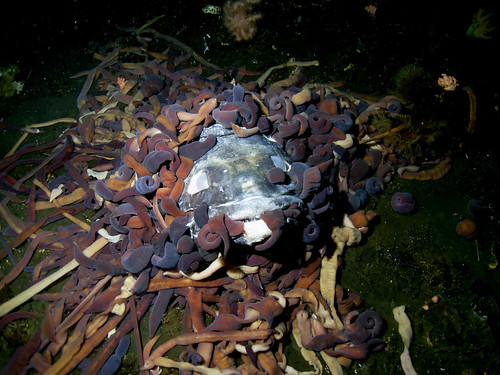 |
| Image by Scripps-Oceanography |
One of these days I should write these guys up on Echinoblog...
and remember this famous video? Those giant worms? THAT is Parborlasia!
3. Antarctic amphipods! Epimeria and others..There wasn't a lot known about the biology of these-but man, LOOK at em!! These are described species..KNOWN animals...
Epimeria macrodonta (fr. USNM USARP collection)
Aeginoides gaussi (fr. USNM USARP collection)
unidentified Acanthonootozomatidae
4. Flabellum-Stony coral that broods little baby coral! There's a neat paper by my colleagues Rhianne Waller, Paul Tyler and Craig Smith (here) which describes how these deep-sea Antarctic stony corals (related to the shallow kind everyone knows about) have LITTLE BABIES!!!
These little guys below are orange/red and they literally just crawl in and about the cup above! They're only a few mm long. Cute! But whodda thunk that coral had little babies??? (Fig. below from Waller et al's paper) These eventually crawl away and build their own cups..but that is a story for another day.. (or you can just go read the paper.. )
5. Weird Isopod Antarcturus hodgsoni So, you know those little sowbug/rollie pollies that you see in your garden??
Well, in Antarctica they get REALLY weird. There's spines and longer legs and and are actually kind of elongate. Bizarre.
And FINALLY, the best for last! Echinoderms!
6. Labidiaster annulatus-50 rayed Predatory Starfish. A LARGE starfish (almost 2 feet across) with 50 rays that use claw-like structures called pedicellariae to catch MOVING prey (krill)!!! Click here to read more!

7. Cidaroid Sea Urchins. Strange antarctic Sea Urchins that have sponges, worm tubes and all sorts of other critters living on the spines. Not only do they flourish but the urchins carry/disperse these species into NEW areas and "seed" them with the animals on their spines.
GO read it..
GO read it..
8. Odinella nutrix. Brooding brisingid starfish! Odinella is not only a brisingid (as outlined here), that is, a sea star which feeds on moving prey using its arms and pedicellariae-but you see that big prickly spiny area around the disk?
Odinella BROODS juveniles! It keeps little baby Odinella in that big spiny briar patch it calls a disk!
9. Ophiuroids! Ophiosteira, Ophiomages and more! My colleague Rafael Martin-Ledo has written about Antarctic brittle stars in his blog-Antarctic Brittle stars!
Among the many interesting topics!
10. Finally...SEA PIGS!! Go here!(or click on the pic) There are actually several different genera and species of "sea pigs" (members of the family Elpidiidae) Not all of them live in the deep-sea, some of them live in Antarctic waters...
Some sea pigs live ONLY in Antarctic. Yes, some are found outside the Antarctic via the deep-sea but when you hear the next message about "saving Antarctica" realize that even if some of these species don't occur exclusively in Antarctica, they have close ties.
There's something special about a place that gives you a world with neat beasts like the ones above.
They aren't as cute and fuzzy as seals or penguins-but when you think about the incredible evolutionary story of THESE animals (many of those stories-we are STILL learning!) compared to the warm and fuzzies realize that Antarctica is not just a place for "weird" but a place for wonderous and unique...
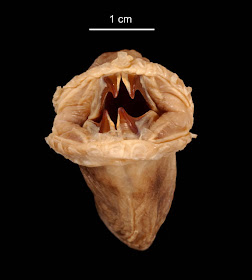





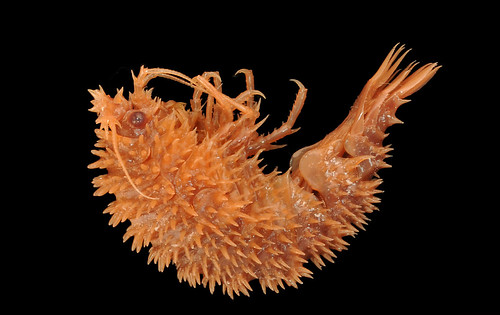

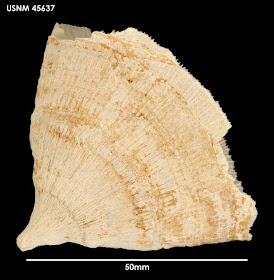


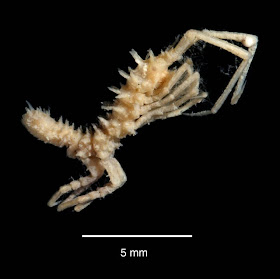






Outstanding post man. Your enthusiasm for the subject is infectious.
ReplyDeleteThanks! Always appreciate the compliment!
ReplyDeleteFirst off, I love your personal additions to the list. But while reading it I found that the links under items 6 and 7 were broken. Otherwise, great article.
ReplyDeleteInnomen is right, you have a passion for the subject and it shows. I really appreciate that you write these. Not only that, but the blog is becoming an excellent resource for quick bits of information on organisms that would otherwise lack such articles, thank you.
Slightly off-topic, but do you have any opinions about the unknown creature seen at 1:19 in the scale worm video? The narrator implies they think it may be an echinoderm.
ReplyDeleteCyc- Links are fixed!! thanks! Sometimes those go wiggy on me. I thought they worked when I posted them!
ReplyDeleteKH-nothing off topic at all! Pretty sure that's a sea cucumber. Sea anemones don't have that kind of motor control and those muddy bottoms are the kinds of places that some of those cukes like to live. Although its hard to count- it does look like about 20 feeding arms which would be an increment of 5. But there is what looks to be a mouth so 95% sure its a cuke.
This video contains content from Arte, who has blocked it in your country on copyright grounds.
ReplyDeletethanks amoeba! I've replaced it with a working vid!
ReplyDeleteVideo works now, thanks!
ReplyDeleteIt's a great shame that more people don't bother to appreciate the incredible wonders of our wonderful planet.
Just to let you know I'm getting notifications for spam messages that are not appearing on your blog.
ReplyDeletethanks! I've been aware of some spamming. I'm looking into it.
ReplyDeleteFYI, another spam today.
ReplyDeleteHi Chris, I just love your blog! My husband studies sea scallops and introduced me to your blog and it's really great. I enjoy learning about all these critters, and especially love your writing style. I blog for the Huffington Post and a bunch of other sites, so I regularly read a lot of different voices. I love your enthusiasm and all the capital letters and exclamation points when you're really revved up. It's so much fun to read. Keep it up! If you have any information about sea cucumbers around Alaska, I'd be interested, especially regarding their role as walrus food. The poor things seem like sitting ducks while walruses descend upon them like blubber torpedoes. Do you have any blog posts about this?
ReplyDeleteHi Lori,
ReplyDeletethanks for your kind words! I have many articles about sea cucumbers but none about their predators (other than as food for people).. but that's always fodder for future posts!
thanks!
Very impressive I must say! Fascinating!
ReplyDeleteIs this a type of marine invertebrate or a fake?
ReplyDeletehttps://www.facebook.com/100006982356469/posts/2450370401872348?sfns=mo
I'd say fake.
ReplyDelete